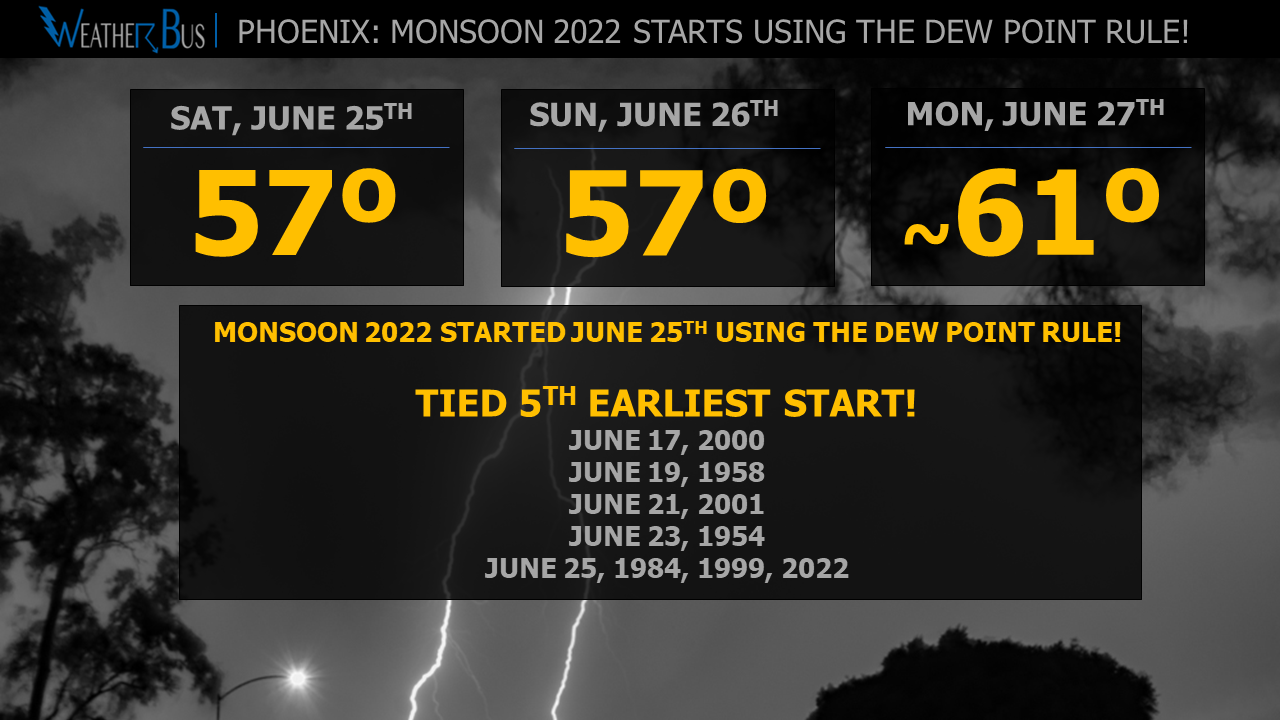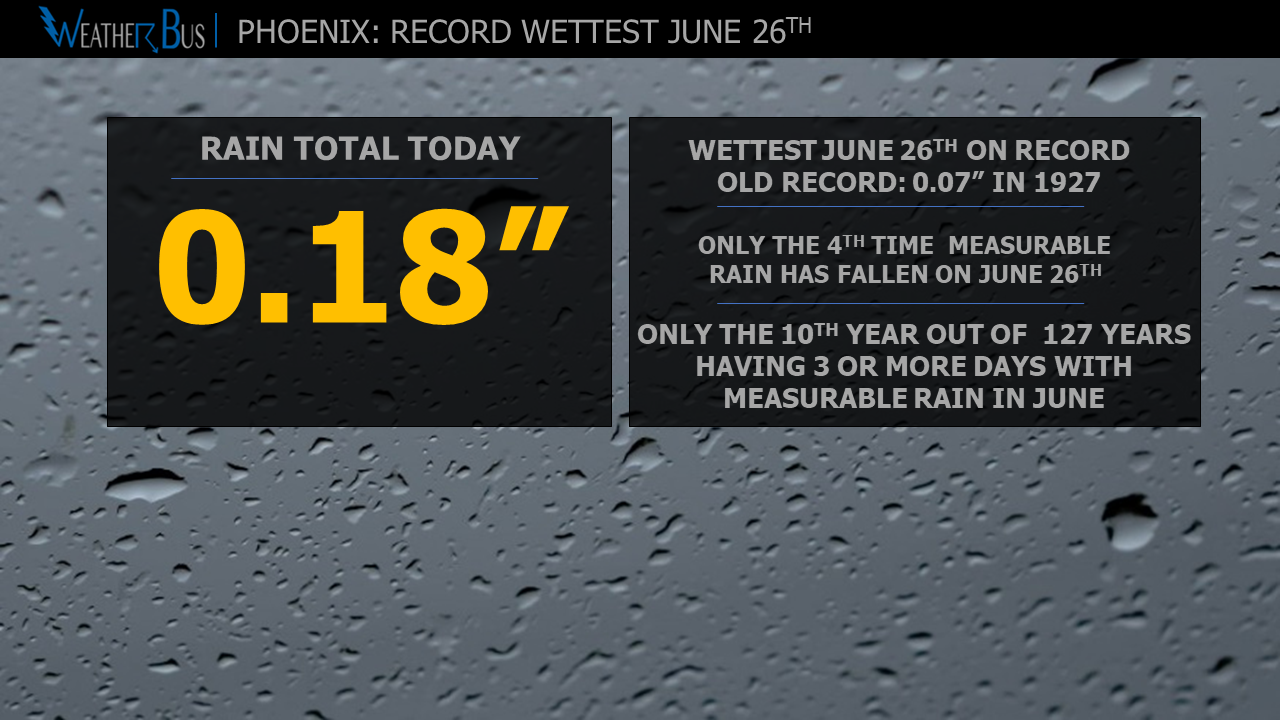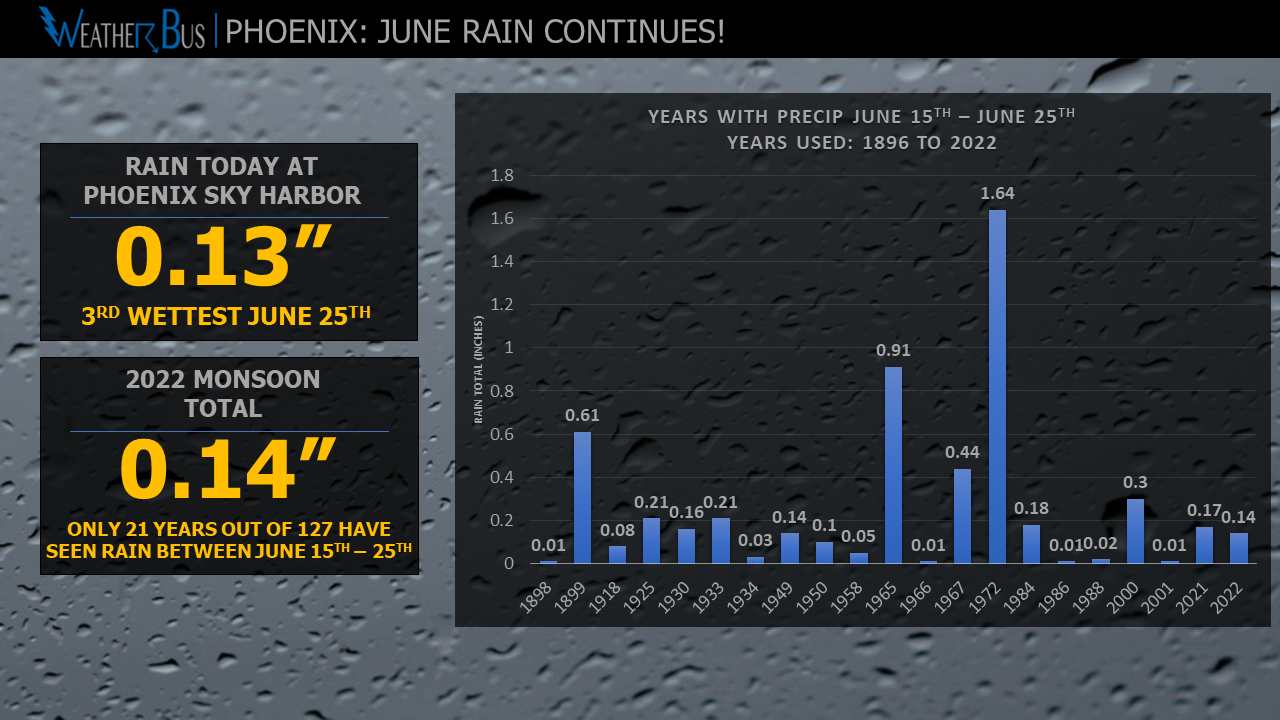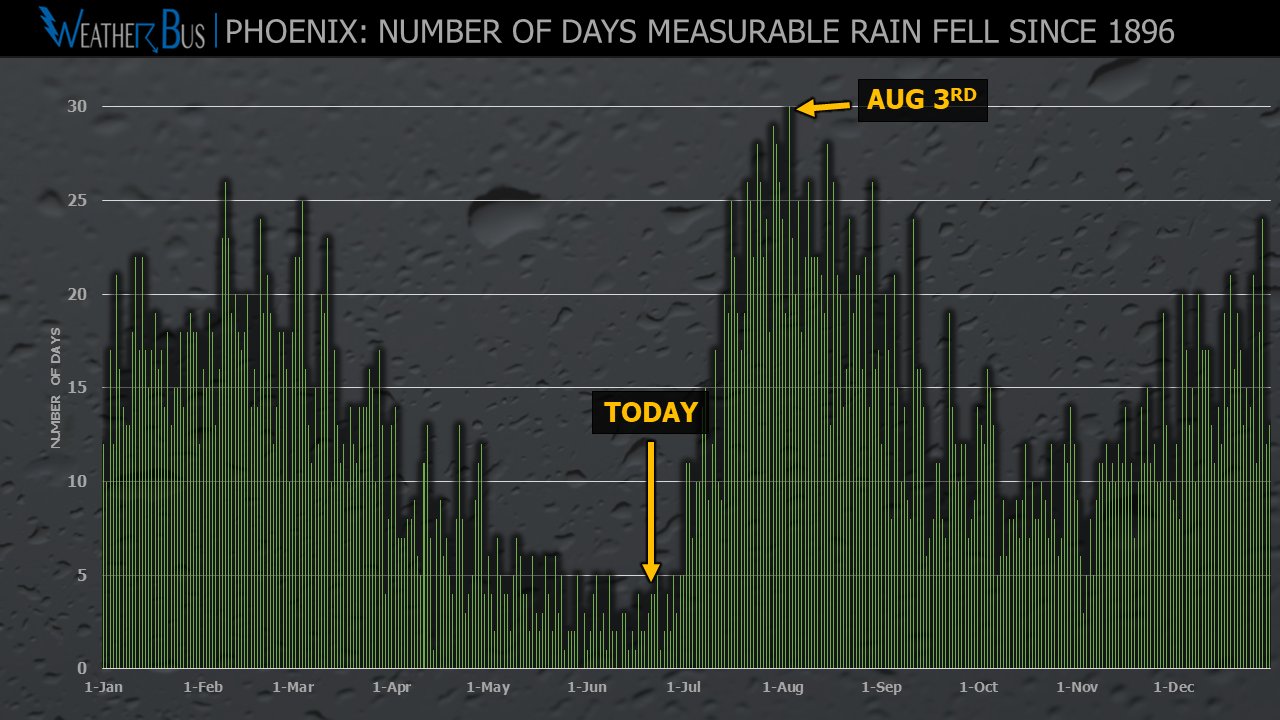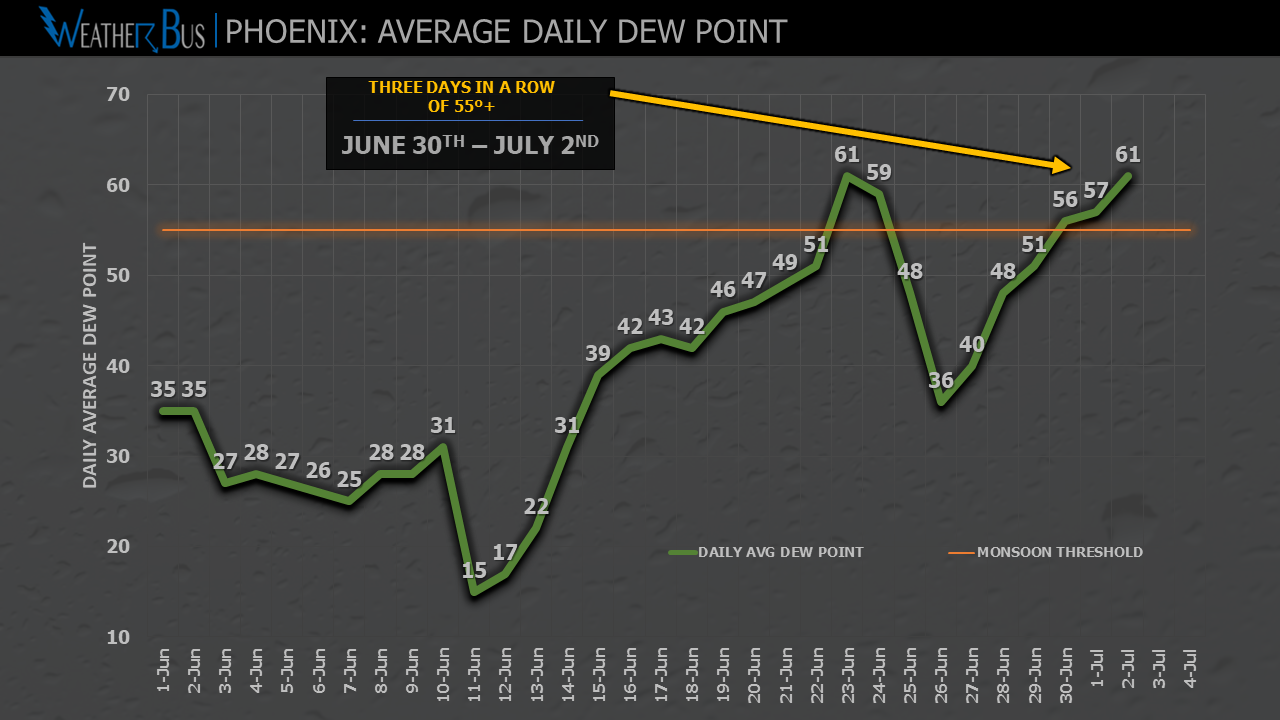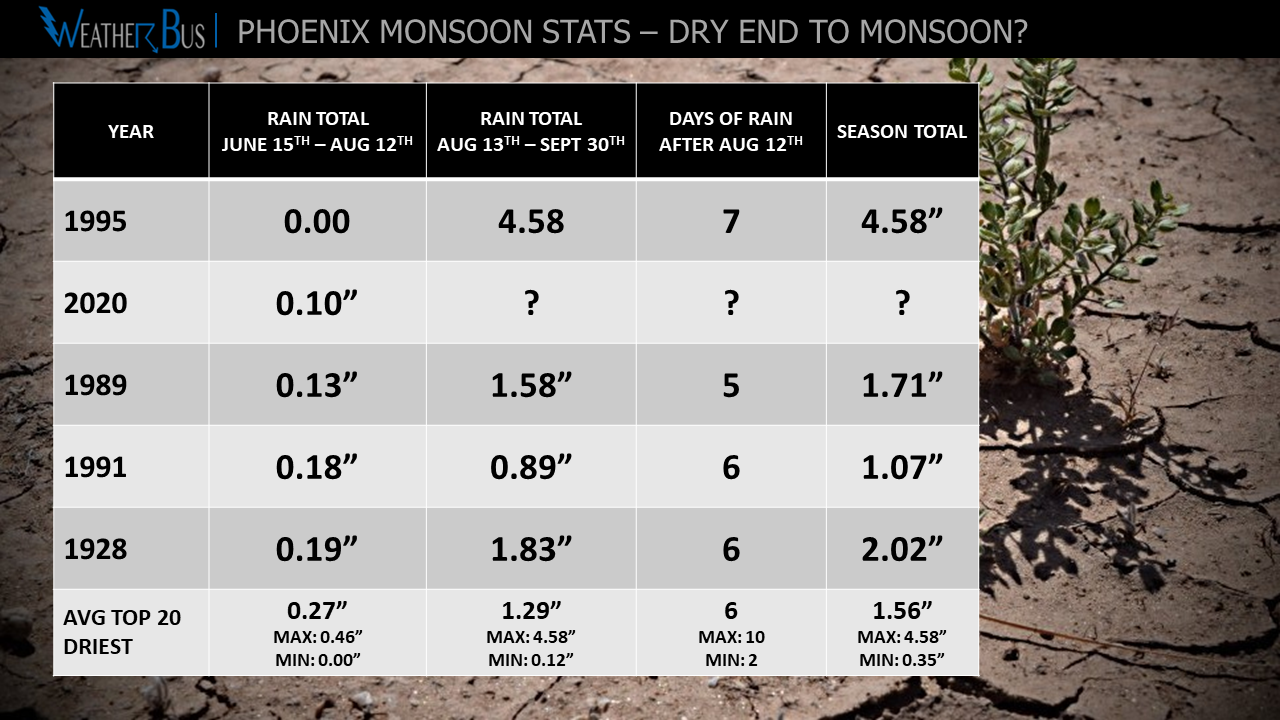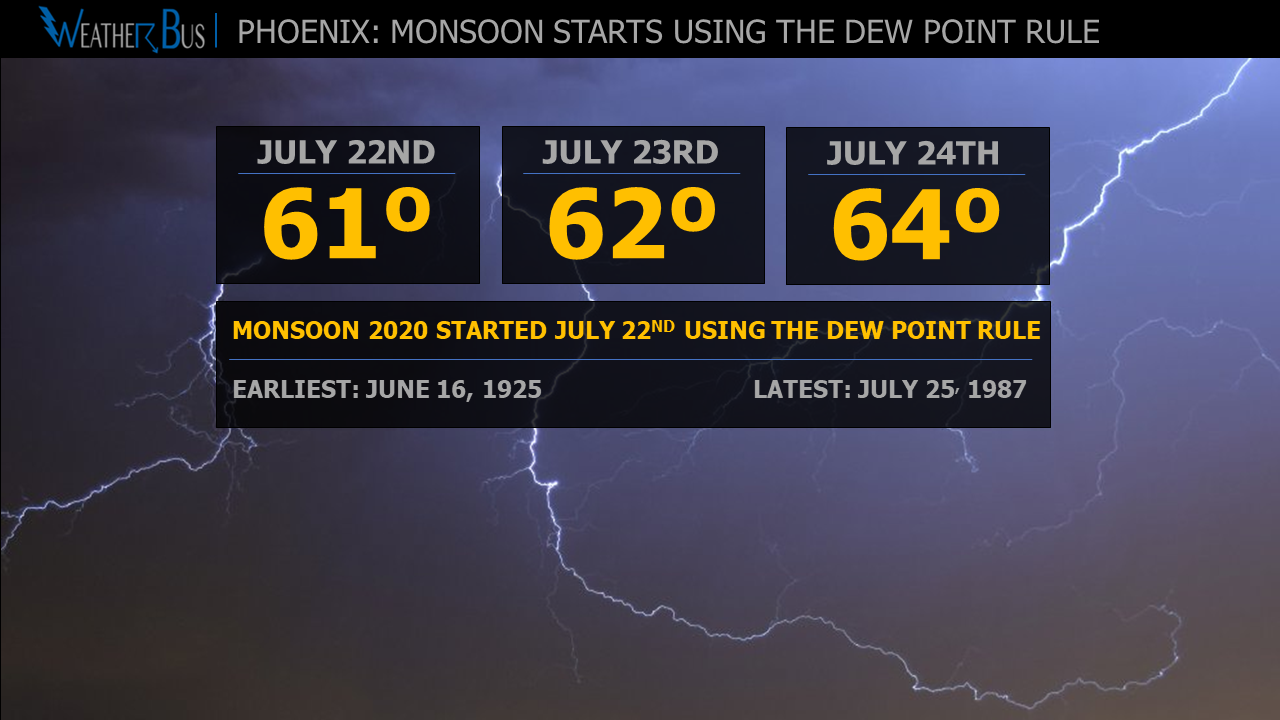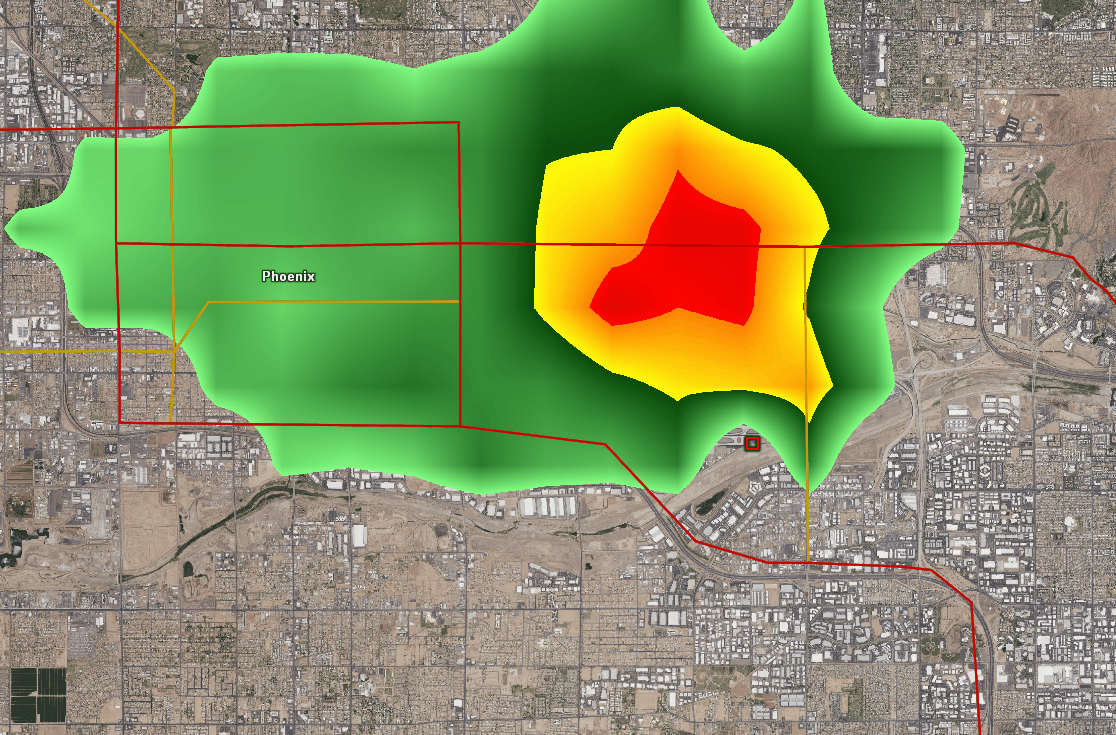Believe it or not, we are now past the halfway point when it comes to Monsoon 2020. So far this season (June 15th - August 12th), Phoenix Sky Harbor has measured a meager 0.10" of rain. This year now ranks as the second driest monsoon during this period, with the record driest going to 1995, when no rain fell until August 14th!
With the first half of the season being so dry, could we see a wet end to the season? Let's go to the data!
Back in 1995, at this same time, we had no rain; however, from August 13th - September 30th, an additional 7 days of rain was recorded with the monsoon total ending up at 4.58", which is well above the average of 2.71". So just because we start dry, we don't have to end dry!
Now, before you get too excited, let's look at the averages from the top 20 driest monsoons (June 15th - August 12th). On average, there are six days of rain between August 13th and September 30th, resulting in an additional 1.56" of rain. Using this average, it would leave Monsoon 2020 in Phoenix at 1.66", which is over an inch below the average.
Looking at the worst possible situation, no rain has fallen during the last half of monsoon in 1973 and 1945, which would leave Phoenix as 0.10". This would undoubtedly break the record for the driest monsoon on record.
On the flip side, in 2014, Phoenix received 5.84" of rain in the last half of monsoon, with 3.3" falling in just one day as moisture from a tropical system moved into the region.
So while odds are certainly leaning toward a dry end to Monsoon 2020, don't let your guard down thinking there will be no more storms in the Valley of the Sun. There are some indications that tropical activity in the East Pacific could increase later this month into September, which could help to bring plenty of moisture to the state. After all, it really only takes one good storm to get us right back to average or even above average.
Keep thinking rain!
